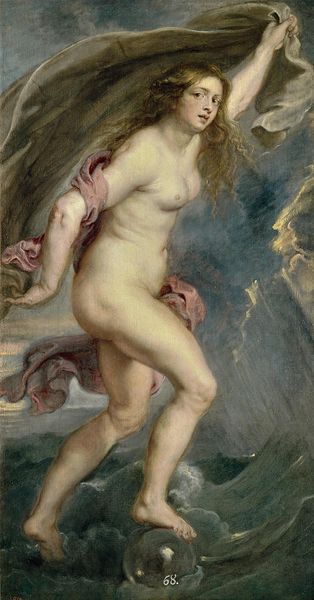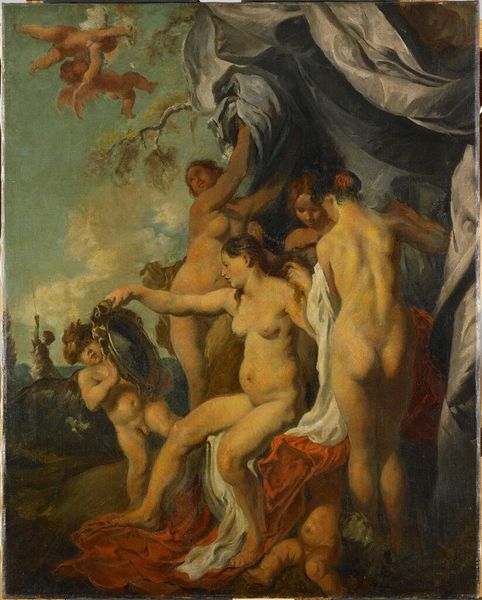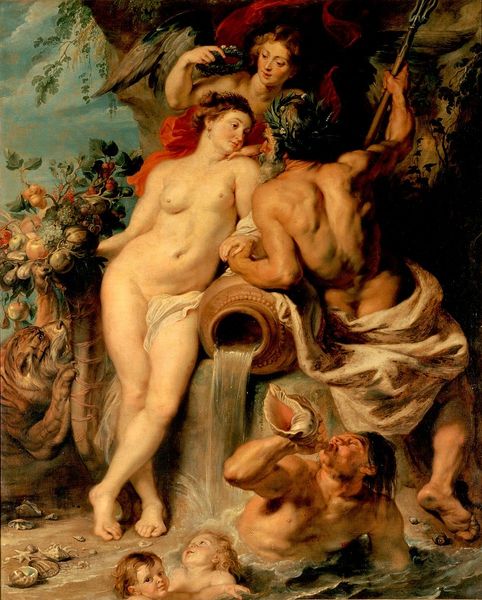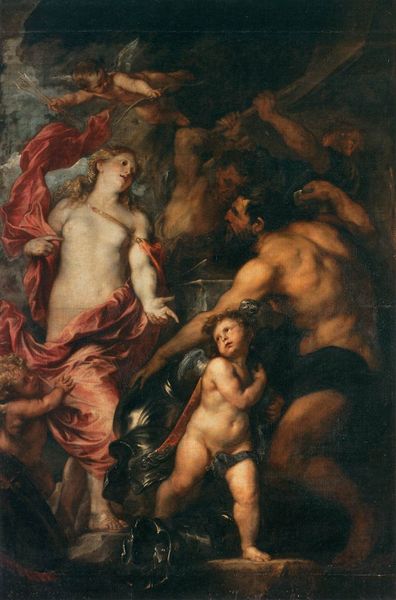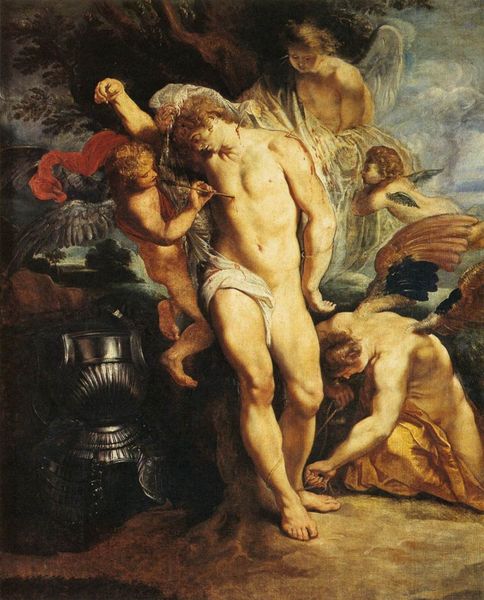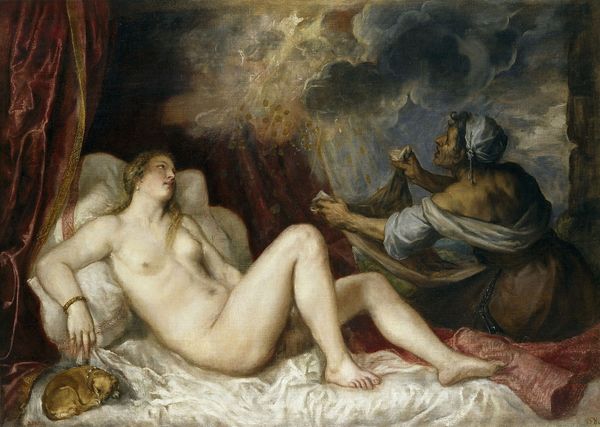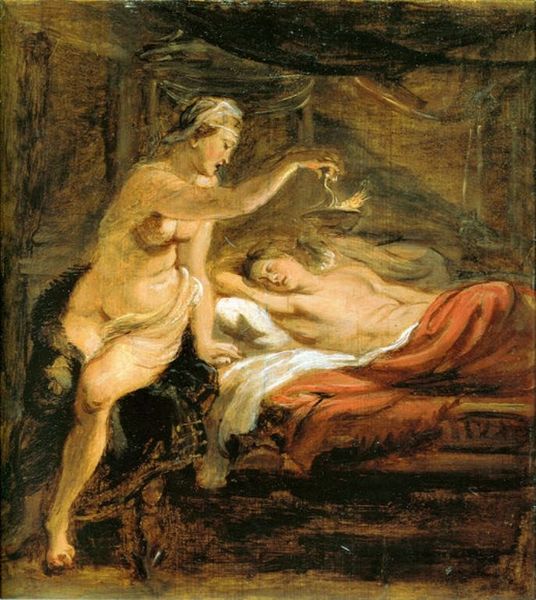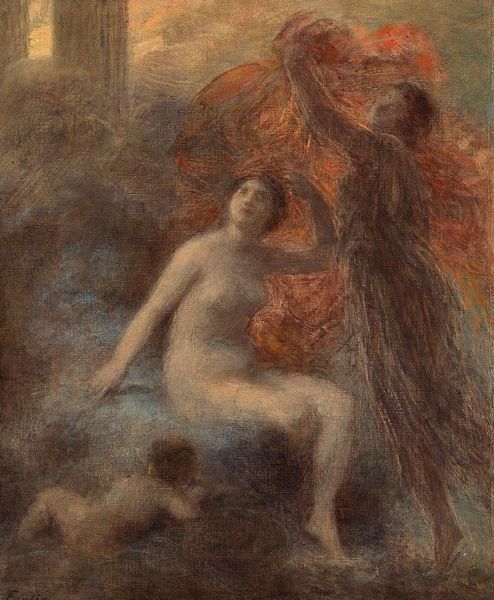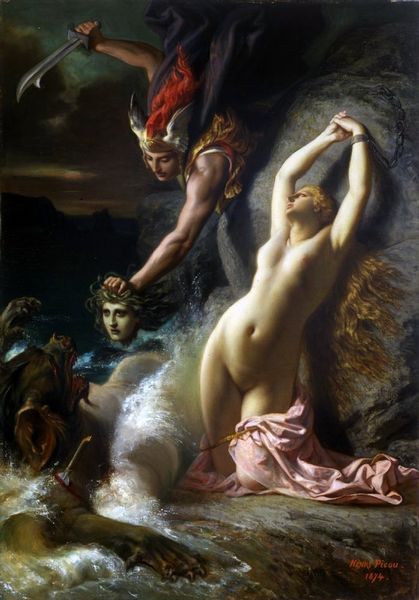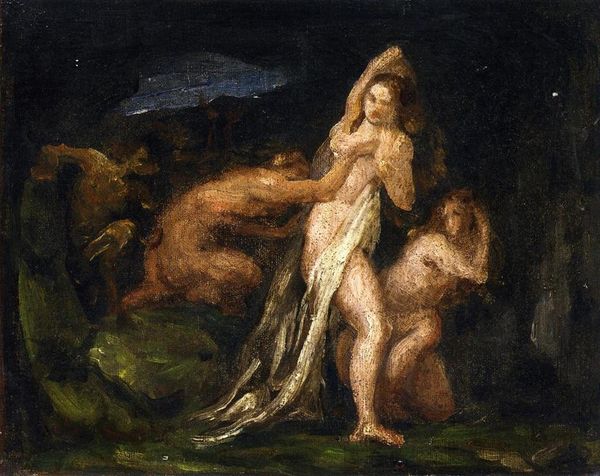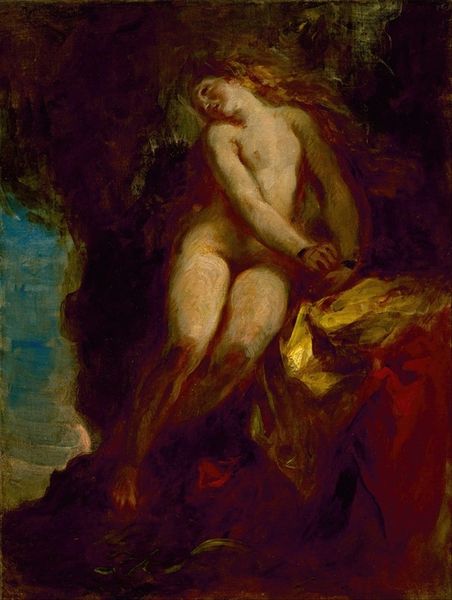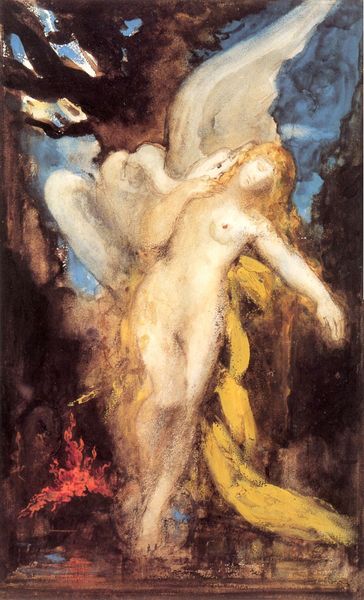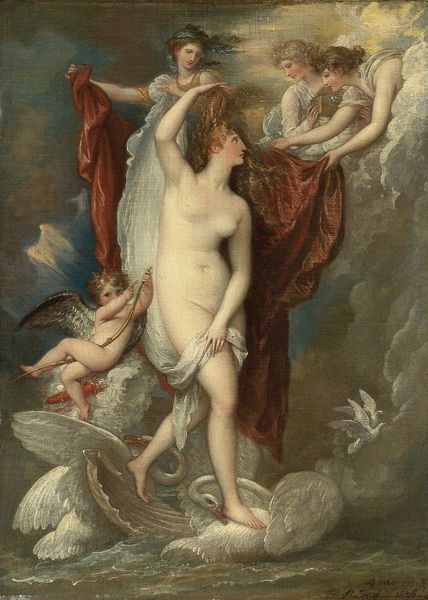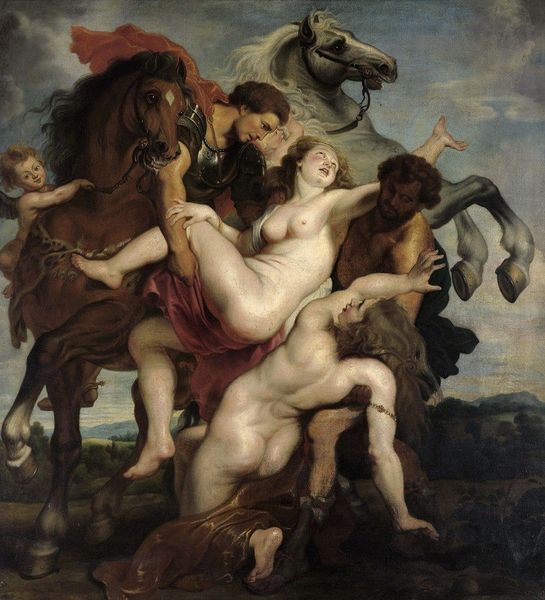
painting, oil-paint
#
baroque
#
painting
#
oil-paint
#
figuration
#
oil painting
#
roman-mythology
#
mythology
#
history-painting
#
nude
#
rococo
Dimensions: 47 x 31 cm
Copyright: Public domain
Editor: So, here we have Watteau's "The Judgement of Paris," painted around 1721. It's an oil painting, and what immediately strikes me is its hazy, almost dreamlike quality. The composition seems to dissolve at the edges, creating a very sensual and somewhat ambiguous feel. What's your take on this? Curator: Indeed. It's crucial to consider Watteau's masterful use of color and line. Notice how the delicate, feathery brushstrokes create a sense of movement and lightness. The composition itself relies on a subtle asymmetry, shifting our focus between the figures. Editor: So you are talking about form. I do see how he guides my eye. Curator: Precisely. How do the relationships between these figures—Paris, the goddesses—create tension or harmony? Consider also how the formal choices like open brushwork influence the painting’s themes. The translucence, for instance. Editor: It makes them feel both present and absent at the same time, a dream made real, or reality made into a fleeting experience. Does that read into the subject of mythology? Curator: In a sense, yes. The hazy finish lends an ethereality to the classical subject, further distancing us from straightforward readings. The Rococo love for surfaces. Does the work speak of the narrative power, or its limits? Editor: Hmm, I guess the power of art does not need clarity. It hints at more, like a feeling, even beyond time. I did learn from the way Watteau composes to make meanings of an age, maybe every age. Curator: Precisely. Understanding these formal techniques provides a critical language for appreciating its deeper aesthetic and philosophical dimensions.
Comments
No comments
Be the first to comment and join the conversation on the ultimate creative platform.
